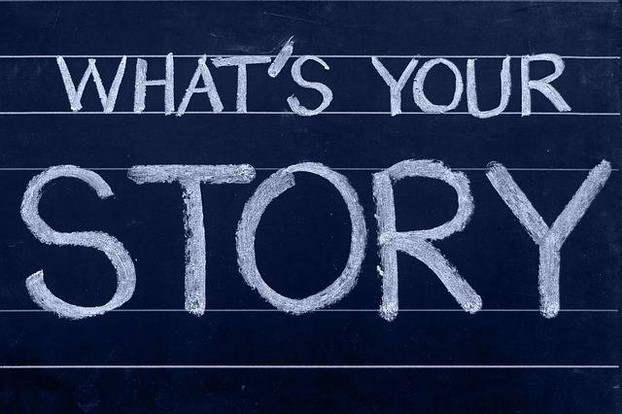Blogger, today more known as Blogspot, is one of many properties owned by Google. Everybody with an active Google account (registered Gmail service for instance) can start blogging right away and can open many blogs with only one account. Even more - we can create blogs with multiple users, integrate Adsense, generate traffic and build a real business with no upfront costs in a relatively short amount of time.
But like other Google properties, it can be abandoned in virtually no-time. Their clumsy transition from HTTP to HTTPS standard (enforced by Google, by the way) is just one of dozens of examples of Google's handling of its own 'family'. We have recently seen how Google Plus, a powerful, yet too late born alternative to Facebook and Twitter died despite hundreds of millions of dollars invested in the project. We have seen numerous great blogging platforms (Blog.com, Posterous.com) being shut down in last years and we'll definitely see more.
It's also a well-known fact we should not carry all the eggs in one basket, so it's logic to have one blog on Blogger and open another in a different environment if we need two or more blogs for whatever reason. This is where the alternatives come handy. This post is all about alternatives. It will shortly introduce several options with their main pros and cons for unskilled users. There will also be a few examples where you can see how the result looks.











 Pinterest Tipson 11/22/2024
Pinterest Tipson 11/22/2024
 Make Your Printable Advent Calendaron 11/19/2023
Make Your Printable Advent Calendaron 11/19/2023
 Best Free Portfolio Sites for Artists and Designerson 10/06/2023
Best Free Portfolio Sites for Artists and Designerson 10/06/2023
 Thinking About Painting Your Walls Pink?on 06/17/2023
Thinking About Painting Your Walls Pink?on 06/17/2023



Can you add another interesting free blogging platform?
It's still a work in progress. Moe urgent issues to deal with ...
So many thanks for thefairytales link at the end of the 8th, Substack Blogspot-alternative subheading!
There are 18 fairy tales in the alphabeticalized fairy-tale list.
Does each fairy tale have famous illustrators or is the septet whose imagery is available what inspired the famousest illustrators?
Thanks again for thefairytales link at the 8th-subheading ending about the Substacks alternative to Blogspot!
The Beauty and the Beast illustrations amaze me with the wide range of beastly interpretations of the fairy-tale Beast.
Perhaps the two bear examples by John Hassall (1886-1948) draw me the most because of their amiability.
Might there be any information as to which illustrator numbers as premier interpreter of beastly profiles?
Many thanks again for thefairytales link to the 8th, Substack Blogspot-alternative subheading!
The Charles Robinson (1870-1937) image in the Beauty and the Beast illustrations clusters a music score and two book pages.
Do we get to know what the score is and where the pages are from?
Many thanks again for thefairytales link that ends the 8th, Substack Blogspot-alternative subheading.
The Beauty and the Beast illustrations include one image by Eleanor Vere Boyle (1825-1916). The information beneath that image lauds that book and its images with the praise that "The quality of printing is spectacular for those times."
Might it be known what EVB did differently to stand out so in terms of image quality?
Thank you, as usual, for thefairytales link at the end of the 8th, Substack Blogger-alternative subheading.
The caption under the third image, by Ada Leonora Bowley (1866-1943), to the Beauty and the Beast illustrations considers that "I don’t have much information about the illustration above. Ada Leonora Bowley made most of her pictures together with her sister but this project (including several black and white drawings) seems to be her own brainchild. The pictures were created and published around 1920."
Did the black-and-white drawings depict the Beauty and the Beast?
Thank you for the 8th, Substack Blogger-alternative subheading with its link to thefairytales.
The Bluebeard images appear to correlate green and red with his story. John Austen and Harry Clarke associate Bluebeard attire with those two colors even as William Heath Robinson associates Bluebeard with green socks and red shoes.
Might there be some symbolism such as pursued by Tolovaj wizzleys regarding symbolic fairy-tale colors?
Red prompts the Holy Spirit firstly and foremostly for me even as it perhaps represents Bluebeard-ian anger, correct?
Thank you for thefairytales link that ends the 8th, Substack Blogger alternative!
The Bluebeard illustrations by John Austen and by William Heath Robinson have Bluebeard with hair hidden by roomy turbans. Only the image from Harry Clarke interprets a red-haired Bluebeard.
Is there a tradition of Bluebeard having different-colored facial and head hair?
Thank you for thefairytales link below the ending information to the Substack Blogger-alternative subheading.
The first image among the Bluebeard illustrations is by John Austen. The underlying caption mentions, "The key, Madam!"
Might that be the seventh wife or would Bluebeard have subjected all the previous six wives each to going away and leaving the keys with the sure suspicion that curiosity will prompt disobeying proscriptions and provoke each murder?
Thank you for linking the Substack Blogger alternative subheading to thefairytales.
My favorite illustrations well may be the blue-preponderant Jessie Marion King (1875-1949) image. Might there be any publishing information? Was that for a book or poster or something else?